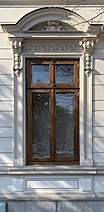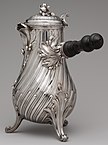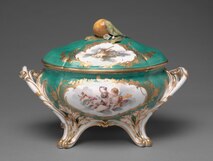Examples of industrial designs
Examples of architecture
Examples of sculpture and metalworks
Examples of ceramic art and ceramic sculpture
Examples of fashion
Examples of furniture
Examples of glassware
The applied arts are all the arts that apply design and decoration to everyday and essentially practical objects in order to make them aesthetically pleasing. [1] The term is used in distinction to the fine arts, which are those that produce objects with no practical use, whose only purpose is to be beautiful or stimulate the intellect in some way. In practice, the two often overlap. Applied arts largely overlap with decorative arts, and the modern making of applied art is usually called design.
Contents
Examples of applied arts are:
- Industrial design – mass-produced objects.
- Sculpture – also counted as a fine art.
- Architecture – also counted as a fine art.
- Crafts – also counted as a fine art.
- Ceramic art
- Automotive design
- Fashion design
- Calligraphy
- Interior design
- Graphic design
- Cartographic (map) design




















